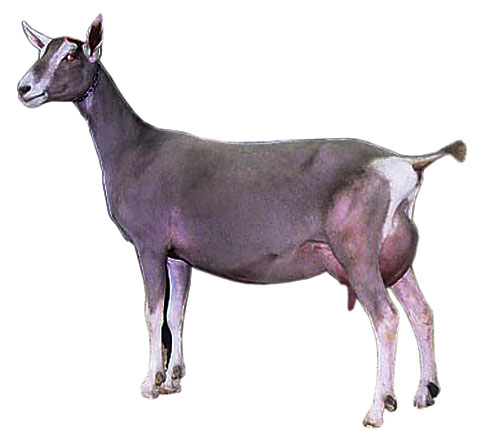
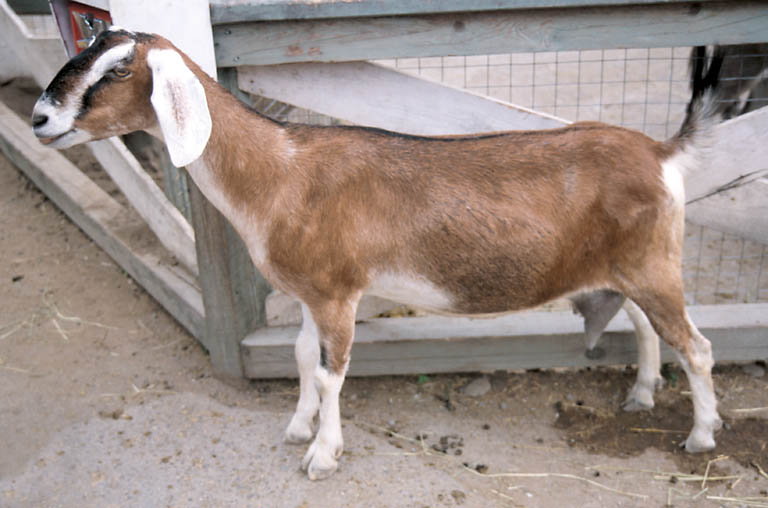
Très Belle Chèvre
Goat Dairy & Fromagerie

INFORMATION---Dairy Goat Breeds, Who’s Responsible For All That Great Cheese?
Dairy Goat Breeds
Who’s Responsible For All That Great Cheese?
Goats are one of the oldest domesticated species. Goats have been used for their milk, meat, hair, and skins over much of the world. In the twentieth century they also gained in popularity as pets. Unlike the ornery, tin can- and laundry-eating billy goats of our cartoon youth, goats are delightful creatures. They make wonderful companions and pets. Goats are extremely curious and intelligent. They are easily trained to pull carts and walk on leads.
Goats produce approximately 2% of the world's total annual milk supply. Some goats are bred specifically for milk. If the strong-smelling buck is not separated from the does, his scent can affect the milk.
Doe milk naturally has small, well-emulsified fat globules, which means the cream remains suspended in the milk, instead of rising to the top, as in raw cow milk; therefore, it does not need to be homogenized. Indeed, if the milk is going to be used to make cheese it is recommended that it is not homogenized as this changes the structure of the milk impacting the culture's ability to coagulate the milk and the final quality and yield of cheese.
Dairy goats in their prime, which is generally around the third or fourth lactation cycle, average 6 to 8 pounds (2.7 to 3.6 kg) of milk production daily (roughly 3 to 4 US quarts (2.7 to 3.6 liters)) during a ten-month lactation, producing more just after freshening and gradually dropping in production toward the end of their lactation. The milk generally averages 3.5 percent butterfat. A doe may be expected to reach her heaviest production during her third or fourth lactation.
Doe milk is commonly processed into cheese, butter, ice cream, yoghurt, cajeta and other products. Goat cheese is known as chèvre in France, after the French word for "goat". Some varieties include crottin, Rocamadour and Montrachet. Goat butter is white because goats produce milk with the yellow beta-carotene converted to a colorless form of vitamin A.
Introducing The Goats
Dairy goats can live comfortably into old age while producing a large amount of delicious milk. Dairies breed species for good milk flavor (other goats are bred for meat flavor).
An average mature dairy goat female weighs 150 pounds, and produces a gallon of milk per day. Top producers can average two gallons (compare that to a cow, which gives ten gallons of milk a day). You can purchase a mature doe in the range of $350 to $600, depending on breed and quality of production.
While there are hundreds of goat breeds worldwide, five major breeds of dairy goats are used to make cheese in the United States: Alpine, LaMancha, Nubian, Saanen and Toggenburg. Most dairies use several and vary them between the high milk producers and the high butterfat producers. The high butterfat breeds like LaMancha and Nubian make richer cheese, but don’t produce enough milk to sustain a profitable operation: they might yield only one gallon of milk a day. Their milk is blended with that of more prolific breeds, like the Alpine, which might produce up to two gallons a day, to enable a larger production

Alpine. The Alpine dairy goat is a medium to large size animal, alertly graceful, and the only breed with upright ears that offers all colors and combinations of colors giving them distinction and individuality. They are hardy, adaptable animals that thrive in any climate while maintaining good health and excellent production.
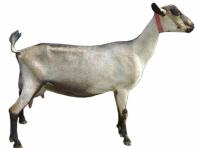
LaMancha. The LaMancha breed was developed California, and is the only one of the five that lacks an external ear (it has a “gopher ear” or an “elf ear”). LaManchas can be any color from pure white to brown to black to dappled, and tend to carry a bit more fleshing than the four European breeds. Their milk is high in solids and butterfat content. They have an excellent temperament and are an all-around sturdy animal.
Nubian. The typical Nubian goat is large in size and carries more flesh than other dairy breeds. The Nubian breed standard specifies large size, markings can be any color, the ears are long, pendulous and floppy and the nose is Roman. The Nubian temperament is sociable, outgoing, and vocal. They have the highest butterfat and milk solids of the six dairy goat breeds.
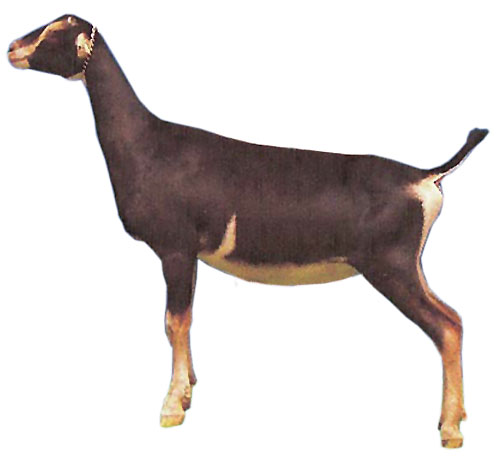
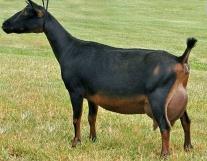
Nigerian Dwarfs. These goats are small but proportional in size. Nigerians give a surprising quantity of milk for their size. Their production ranges from one Nigerians breed year-round.. Their milk has a higher butterfat content than milk from full-sized dairy goats, usually about 5%, but going as high as 10% at the end of a lactation. This makes Nigerian Dwarf goat milk excellent for cheese and soap making .

Oberhaslis. The breed is about two inches smaller than the other standard-sized (nonminiature) breeds. Their temperament tends to be quiet and sweet natured, but alert, with vocalizing similar to the other Swiss-origin breeds. Oberhaslis are a standardized color breed, with warm reddish brown accented with a black dorsal stripe, legs, belly, and face. This breed is a good choice for the person who wants dairy goats for milk, from hardy thrifty animals, who appreciates the vivid rust-red coloration, wants something slightly out of the ordinary.
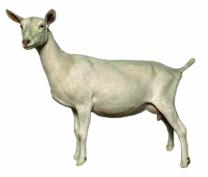
Saanen. The Saanen originated in Saanen Valley of Switzerland, and is the largest of the dairy goat breeds. Pure white, with short, fine coats, they are known as “the Holsteins of the dairy goats.” Calm-natured Saanens have high yields of milk and tends to have a lower butterfat content, about 2.5%-3.0% The Saanen temperament is, as a rule, calm and mild mannered; breeders have been know to refer to them as living marshmallows.
Toggenburg. The Toggenburg is a breed of goat, named after the region in Switzerland where the breed originated, the Toggenburg valley. They are the oldest known dairy breed of goats. This breed is medium size and have a relatively low butterfat content (2-3%) in their milk. They are sturdy, vigorous, and alert in appearance. Slightly smaller than the other Alpine breeds, the does weight at least 120lb/55kg. Toggenburgs perform best in cooler conditions. They are noted for their excellent udder development and high milk production, and have an average fat test of 3.7 percent. The breed has white stockings and facial stripes.
